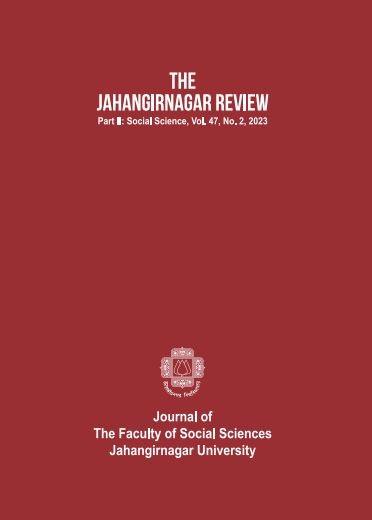Changing Perspectives in Urban Park Use and Management in Dhaka City, Bangladesh
Main Article Content
Abstract
In a developing country like Bangladesh where cities are rapidly growing, urban park can play a vital role in urban sustainability by promoting social, economic, and environmental well-being. On the contrary, urban parks are being demolished due to urban development. Anwara Park was one of the oldest parks in Dhaka City, located in Farmgate which has been heavily affected due to the construction work of Dhaka Metro Rail Project. This study evaluates land use/cover changes in the park, between 2001, 2011, and 2021 using satellite images and Google Earth Pro as well as socio-economic data. Spatial and temporal dynamics of land use/cover changes were quantified using three Landsat images, a supervised classification algorithm and the post-classification change detection technique in GIS and Remote Sensing. Accuracy of the Landsat-derived land use/cover maps ranged from 85 to 90%. The analysis revealed that substantial growth of built-up areas in the park over the study period resulted significant decrease in vegetation density. In 2001, vegetation density was more compared than to the years of 2011 and 2021 in Anwara Park. In 2011, vegetation covers, grasslands, mixed plants had decreased than before. Rapid construction expansion through infilling of park areas resulted in a wide range of environmental impacts. Findings from this study provide useful information. People’s perception regarding use and management of Anwara Park where were several misuse and mismanagement from both end of users and managers. Destruction of previous park also provides the opportunity to build back better the park in the perspective of better use and management. Moreover, these findings also provide a source of comparison, and perhaps inspiration for urban green space authorities in other cities.

